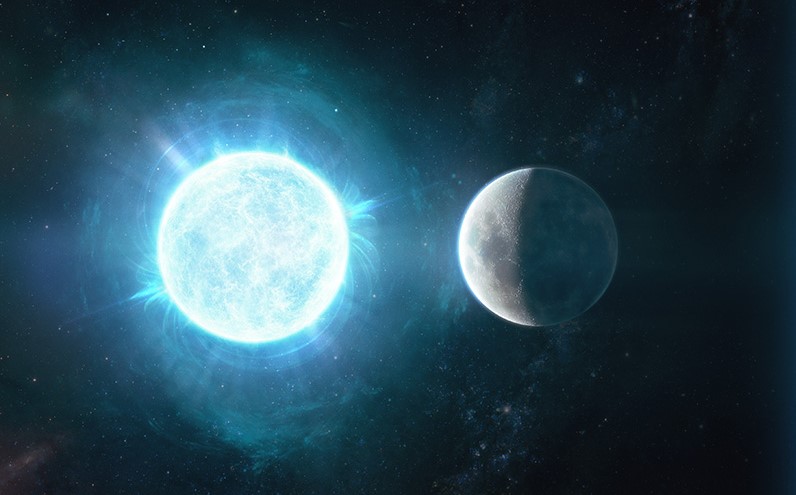Astronomers from the Zwicky Transient Facility operating at the Palomar Observatory, California Institute of Technology, have made a groundbreaking discovery. They have found a white dwarf star that is unlike any other ever observed by astronomers, making it a unique celestial object.

White dwarfs are the remnants of stars that have shed their outer layers at the end of their life cycle. These dense, collapsed stars were once about eight times more massive than the sun. They shrink and turn into compact white dwarfs, with about 97% of all stars in the Universe becoming white dwarfs. The upper limit of the mass of such objects is around 1.4 solar masses, with the heavier ones collapsing into neutron stars, often accompanied by a catastrophic explosion.
The discovery of this white dwarf, named ZTF J1901+1458, is extraordinary because it is simultaneously the smallest and most massive white dwarf discovered to date. The object is the result of stars collapsing and shrinking, and it has a mass of 1.35 times that of the sun. Although it is small, with a diameter smaller than that of Earth, its mass is close to the upper boundary before it would turn into a neutron star.

Another unique feature of this white dwarf is its extreme magnetic field, nearly one billion times stronger than that of the sun. The object rotates around its axis at a breakneck speed, making one revolution every seven minutes.
Astronomers believe that ZTF J1901+1458 went through one of two possible evolutionary paths of development. When dead stars are massive enough, they explode into a Type Ia supernova. However, if their mass is below a certain threshold, they turn into a new white dwarf, which is heavier than any progenitor star. This process strengthens the magnetic field and speeds up the rotation, which is what happened in this case.
/cdn.vox-cdn.com/uploads/chorus_asset/file/15749407/white_dwarf_kinda3.0.0.1459445958.jpg)
The object is located only 130 light-years from Earth, making it a relatively close neighbor in astronomical terms. Additionally, it is very young, estimated to be about 100 million years old or less, which suggests that there may be more such objects in our galaxy.

The discovery of ZTF J1901+1458 is a significant breakthrough in understanding the behavior and characteristics of white dwarfs. This unique celestial object has provided astronomers with new insights into the fascinating phenomena that occur in our Universe.
The study is published in the journal Nature and described in further depth on the website of the W.M. Keck Observatory.








